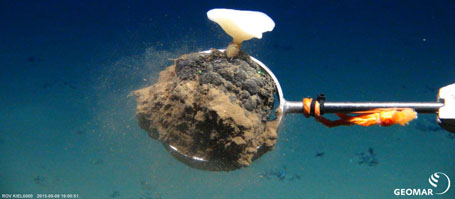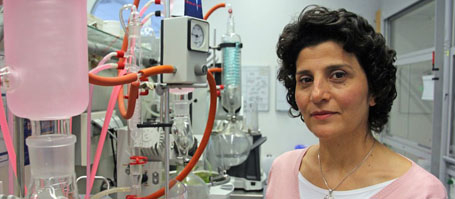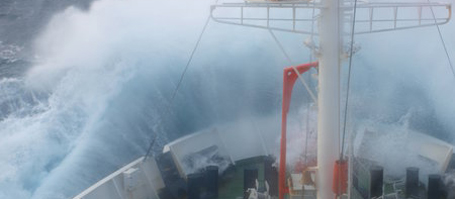Scientists from German and other European countries have revisited a disturbance experiment conducted 26 years ago in more than 4,000 meter water depth in the eastern equatorial Pacific. The use of modern deep-sea technology provided unique insights into the ecosystem status almost three decades after the simulated mining impact.
In 1989, a unique experiment was conducted in the eastern Pacific Ocean. A team of German scientists ploughed about 11 km2 of the seafloor to remove manganese nodules and create sediment plumes, simulating some of the consequences of deep-sea mining for the abyssal ecosystem. The scientists returned to their experiment named DISCOL (Disturbance and Recolonization Experiment) four times from 1989 to 1996 to assess the recovery of the ecosystem. This year – after more than two decades - scientists from Germany and a number of European countries have revisited to the DISCOL Experimental Area (DEA) to reassess the spatial and temporal scales of impact and recovery using high-resolution robotic technologies. Samples and instruments have just returned to their home institutions at GEOMAR Helmholtz Centre for Ocean Research Kiel, Alfred Wegener Institute Helmholtz Centre of Polar and Marine Sciences, MARUM, Max Planck Institute for Marine Microbiology, and Senckenberg.
The autonomous underwater vehicle ABYSS from GEOMAR assembled detailed maps of the plough tracks and nodule densities in the working area, as well as of other key habitat characteristics. In addition biological samples were obtained to compare animal biomass distribution and to retrieve samples for taxonomical identification. The remotely operating vehicle ROV Kiel 6000 from GEOMAR was used for targeted sampling to quantify the effects of the ploughing of seafloor on key ecosystem functions, including geochemical fluxes and bacterial activity and diversity. It also allowed to carry out experiments as to the toxicity of the metallic muds with typical deep-sea species at the seafloor. In addition, a high-resolution deep-sea camera system was towed across the seafloor to photograph and count even small animals at high precision.
“During 23 dives with the ROV Kiel 6000, we conducted in situ experiments and deployed deep sea observatories”, one of the Chief Scientists, Prof. Dr. Antje Boetius from the Alfred Wegener Institute reports. “As a first impression, we can state that the removal of nodules has altered the distribution of animals at the seafloor”, Prof. Boetius continues. Apparently, many species such as sponges, corals and sea lilies need the nodules to settle and grow, and other animals attach to these immobile organisms, similar to how trees are populated by birds and insects. The scientists have gained thousands of images from the seafloor and hundreds of samples for chemical and biological analyses of the disturbed areas as well as the undisturbed seafloor for comparison.
“What surprised us a lot was that the onboard geochemical and microbial analyses indicated that even bacterial activity is still low in the plough tracks”, states Antje Boetius. “This needs further investigation in the lab.”
“Besides the removal of nodules, another expected impact from deep-sea mining is the creation of a sediment plume”, reports Dr. Matthias Haeckel from GEOMAR. Deep-sea sediments are easily eroded and can form clouds of mud that drift with deep-sea currents, and eventually settle thereby potentially impacting the animals living outside of the mining area. It is not known if such plumes are also transporting toxic metals, and if they affect organisms such as corals, which filter the bottom water for nutrients. “We still have a lot to analyze from our very successful expeditions, but it is an enormous motivation to know that the results we produce can directly advice policies for deep-sea environmental protection, including spatial planning for protected areas, and improved mining technology to minimize impacts”, Dr. Haeckel concludes. On initiative of the BMBF, the topics deep-sea resources, deep-sea mining, and its environmental impacts were also discussed by the Minister of Science at the G7 consultations.
Links:
www.geomar.de The GEOMAR Helmholtz Centre for Ocean Research Kiel
jpio-miningimpact.geomar.de Project page "Ecological Aspects of Deep-Sea Mining" with the Expedition Blog
www.drbluhm.de/body3.html DISCOL Experiment
www.bmbf.de/de/tiefseebergbau-oekologische-folgen-276.html
Images:
At www.geomar.de/n4110 images are available for download.
Contact:
Dr. Andreas Villwock (GEOMAR, Communications & Media), phone: 0431 600-2802 presse@geomar.de
…



